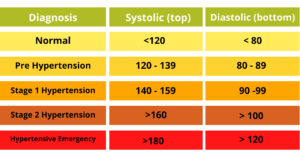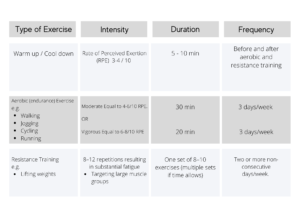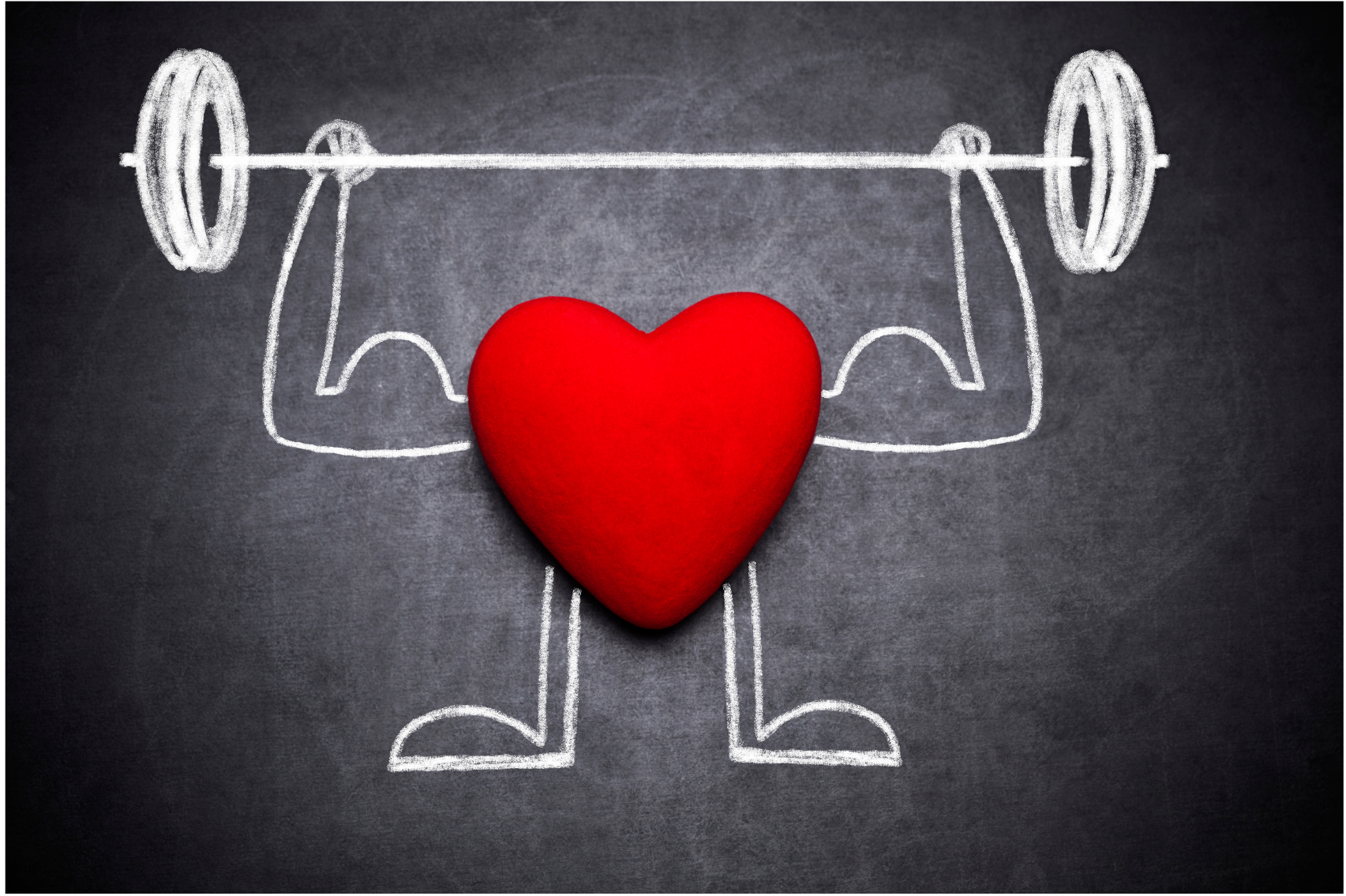By Sam Catherall – Exercise Physiologist
Blood pressure (BP) refers to the pressure against the walls of your arteries as your heart pumps blood around the body. Your blood pressure will naturally fluctuate throughout the day, depending on what you are doing and a number of other contextual factors. Blood pressure is clinically expressed with two numbers, the top representing the heart when it is contracting (systole), and the bottom number representing heart relaxation (diastole), for example – “120 over 80”.
What determines blood pressure?
- Vessel diameter and blood volume
- Plaque formation (atherosclerosis & cardiovascular disease)
- Smoking
- Weight gain
- Diabetes
- Alcohol
- Stress
All of these factors contribute to changes in your vascular structure, which directly impacts your blood pressure regulation and increases your risk of cardiovascular disease.
What is hypertension?
Excessive, sustained increases in blood pressure is called hypertension. The severity of hypertension is described on a graded scale from mild to severe (see table below). The higher the blood pressure, the higher the risk of cardiovascular events. Your doctor may prescribe you with medication and suggest lifestyle changes (e.g. diet and exercise) to manage your blood pressure and reduce risk. Hypertension is a major risk factor for chronic kidney disease, heart failure, cardiovascular events (e.g. heart attacks and strokes) and early death. Hypertension may not cause any symptoms, which is why it is sometimes referred to as a ‘silent killer’.

Why is exercise important for your heart? 🏃
Regular exercise has a variety of effects that protect against heart disease and diseases of the blood vessels including hypertension, atherosclerosis and chronic inflammation. Exercise promotes the reduction of bad cholesterol and the up regulation of “good cholesterol”. The treatment of hypertension leads to:
- 35-40% reduction in stroke morbidity and mortality
- 20-25% reduction in coronary artery disease events
- 21% reduction in vascular mortality
- 52% reduction in chronic heart failure
On average, exercise reduces systolic blood pressure by about 6-7 mmHg. Sustaining a 12 mmHg reduction in over 10 years will prevent one death for every 11 patients treated. Scientific studies with large numbers of participants have shown that physical activity, in conjunction with dietary and lifestyle changes should be the first treatment recommended to lower blood pressure and improve cardiovascular health, both in the general population, and those with clinically diagnoses hypertension.
What type of exercise?
The exact type and amount of training required to optimally lower BP is unclear. However, recent recommendations made by Exercise and Sports Science Australia (ESSA), support that regular aerobic exercise and progressive resistance training result in a lowering in blood pressure in patients with hypertension. The general physical activity guidelines are to accumulate 150minutes of aerobic exercise per week, and to perform strength based training at least 2x per week.

It is important to remember that these are guidelines for the general population to aim for, and it may not be appropriate to jump straight into that amount of exercise, especially if you haven’t exercised before or in a significantly long time. These guidelines may also not be appropriate for your individual health needs.
Always check with your GP and an Accredited Exercise Physiologist (AEP) before getting started. An Exercise Physiologist will be able to prescribe you safe, tailored exercise suitable to your individual needs and health goals. ✅
References
Pescatello LS, MacDonald HV, Lamberti L, Johnson BT. Exercise for hypertension: A prescription update integrating existing recommendations with emerging research. Curr Hypertens Rep. 2015;17(11):87.
Sharman JE, Smart NA, Coombes JS, Stowasser M. Exercise and sport science australia position stand update on exercise and hypertension. J Hum Hypertens. 2019;33(12):837–43.
Exercise Right. How exercise can lower your blood pressure – exercise right [Internet]. Com.au. 2019 [cited 2021 Jun 10]. Available from: https://exerciseright.com.au/how-ex


